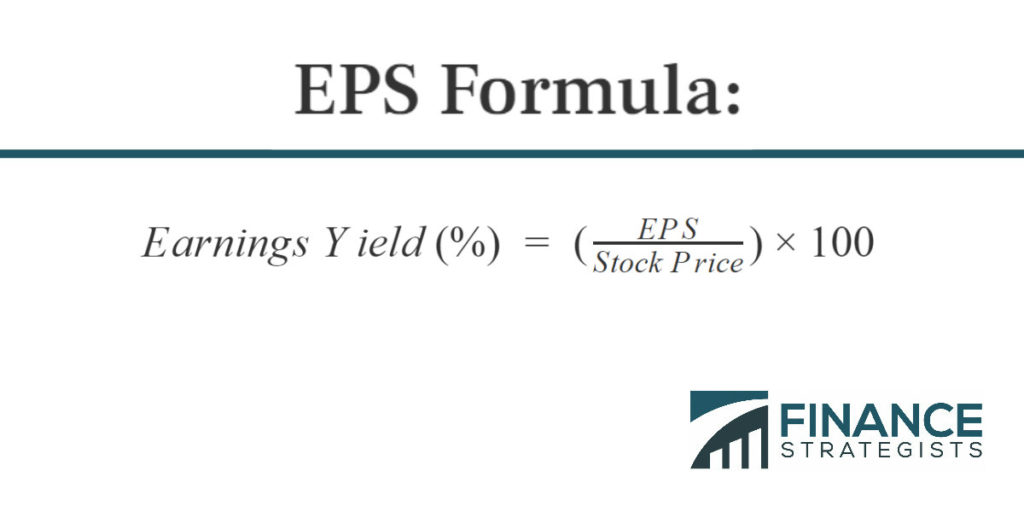The earnings yield is another valuation metric that is simply the inverse of the P/E ratio (the E/P ratio). If you turn the formula around and divide the EPS number by the stock price and multiply by 100, then you get the earnings yield percentage. For example, a company with a stock price of $20 and an EPS of $1 has a PE ratio of 20 ($20 / $1) and an earnings yield of 5% (($1 / $20) * 100). If you want to compare the "yield" of different investments, then this may be a more useful number than the PE ratio. For example, you may see that a savings account yields 2%, while a stock you like has an earnings yield of 5% with earnings that are growing each year. Comparing the yields can give you a good idea of which one is a better long-term investment, although you should keep in mind that stocks are also much riskier than a savings account.Difference Between P/E Ratio and Earnings Yield
EPS Formula:

When to Use P/E Ratio
Price-to-Earnings Ratio (P/E Ratio) vs Earnings Yield FAQs
The P/E ratio is calculated by dividing a company's stock price by its earnings per share, indicating how much investors are willing to pay for each dollar of earnings. Earnings yield, on the other hand, reflects the return a company generates on its stock. It is calculated by dividing the company's earnings per share by its price per share.
P/E ratio and earnings yield can help investors evaluate a company's stock performance. P/E ratio is used to compare the current market value of a company’s stock with its earnings and therefore helps investors determine whether they are paying too much or not enough for each dollar of the company’s earnings. Earnings yield, meanwhile, provides insights into how well a company is generating returns from its stock and can be used to compare the profitability of different companies.
The P/E ratio has several advantages as an investment tool. It provides investors with a quick and easy way to assess how expensive a stock is relative to its earnings, as well as compare the P/E ratios of different companies in the same sector. It can also be used to identify potential buy or sell opportunities.
The P/E ratio does have some limitations. It does not take into account the company’s dividend payments or profits from investments or other income-generating activities. Furthermore, a single P/E ratio cannot provide an accurate picture of a firm’s performance since it can be affected by factors such as stock buybacks and accounting changes.
Earnings yield helps investors evaluate how well a company is generating returns from its stock. It can also be used to compare the profitability of different companies and identify potential opportunities for investments. Furthermore, earnings yield takes into consideration all revenues generated by a company regardless of its source, making it a valuable tool for analyzing a company’s overall financial performance.
True Tamplin is a published author, public speaker, CEO of UpDigital, and founder of Finance Strategists.
True is a Certified Educator in Personal Finance (CEPF®), author of The Handy Financial Ratios Guide, a member of the Society for Advancing Business Editing and Writing, contributes to his financial education site, Finance Strategists, and has spoken to various financial communities such as the CFA Institute, as well as university students like his Alma mater, Biola University, where he received a bachelor of science in business and data analytics.
To learn more about True, visit his personal website or view his author profiles on Amazon, Nasdaq and Forbes.











